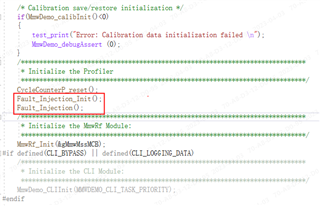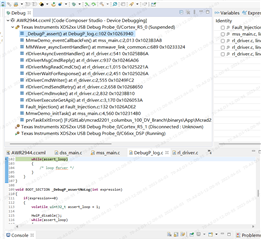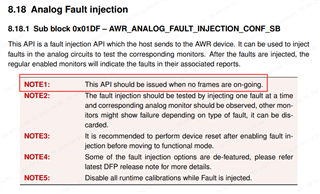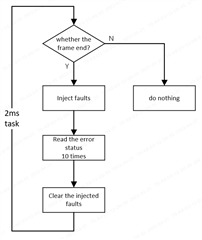Hello experts,
Refer to the mmWave Radar Interface Control Document 8.18 Analog Fault injection, I want to use the fault injection API function to inject faults and get the error infomation.
(void)memset((void *)&rlAnaFaultInjection, 0, sizeof(rlAnaFaultInj_t));
rlAnaFaultInjection.rxGainDrop = 0x01;
retVal = rlRfAnaFaultInjConfig(RL_DEVICE_MAP_INTERNAL_BSS,&rlAnaFaultInjection);
retVal = rlDriverExecuteGetApi(RL_DEVICE_MAP_INTERNAL_BSS,
RL_RF_ASYNC_EVENT_MSG,
RL_RF_AE_MON_RX_GAIN_PHASE_REPORT,
(uint8_t *)&SocMonitor_RfMonRxGainPhReport,
(uint16_t)sizeof(rlMonRxGainPhRep_t));
But when execute the function rlDriverExecuteGetApi,the program will stuck in assert.

The information from CCS debug seems that when wait for the message, a asyncEvent occurred.
So How to resolve this problem
Many thanks.






